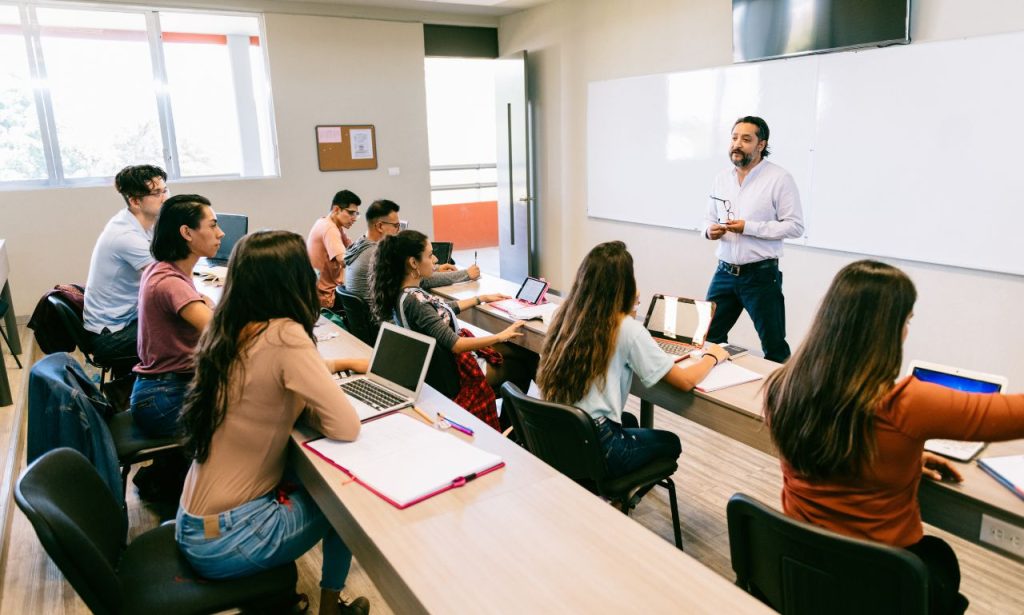Are you making the most of question time in your classroom? Simply asking questions can transform your teaching approach and dramatically improve student outcomes. Let’s explore why questioning might be the most powerful tool in your educational toolkit!
Questions Improve Recall

Have you ever noticed how information sticks better when students retrieve it themselves? That’s not a coincidence—it’s cognitive science in action!
The “testing effect” or retrieval practice is one of the most well-established findings in learning research. When students are asked questions that require them to recall information, they’re not just demonstrating knowledge—they’re strengthening neural pathways that make future recall easier.
I remember working with a particularly challenging group of 8th graders who struggled with history facts. Rather than having them repeatedly read the textbook, I started each class with 3-5 quick questions about previous material. Within weeks, their retention skyrocketed. The simple act of retrieving information regularly helped cement that knowledge in their long-term memory.
Cultivates a Growth Mindset
When you ask thoughtful questions, especially ones that don’t have a correct answer, you show students that thinking is valued more than knowing.
This approach directly supports the development of a growth mindset—the understanding that abilities can be developed through dedication and hard work. You create an environment where effort and improvement are celebrated by posing questions that stretch students’ thinking rather than just testing recall.
Questions like “What approach did you take to solve this problem?” or “How might you look at this differently?” emphasize the learning process rather than just the outcome. This subtle shift helps students see challenges as opportunities rather than threats to their intelligence.
Promotes Effective Communication
When students are regularly asked to articulate their thinking, justify their reasoning, and respond to others’ ideas, they develop crucial communication skills far beyond academic content. The ability to express ideas clearly, listen actively to others, and engage in productive dialogue is foundational to success in virtually every aspect of life. Creating opportunities for students to practice these skills through questioning prepares them for future relationships, careers, and citizenship.
Enhances Student Engagement
Questions are one of the most effective engagement tools because they create a state of cognitive alertness.
When students know questions might come their way at any moment, they’re more likely to stay mentally present. Unlike passive listening, which allows minds to wander, the anticipation of questions creates a productive tension that keeps students focused.
I’ve found that mixing different questioning strategies—from think-pair-share to whole-class discussions to written reflections—helps maintain engagement across various learning styles and preferences. The key is unpredictability: when students can’t anticipate precisely when or how questions will come, they stay on their toes.
Questions Keep Learners Engaged
Have you ever watched a classroom where the teacher talks for 45 minutes straight? The glazed-over eyes, the subtle phone-checking beneath desks, and the doodling in margins are all signs of mental checkout.
Questions break the monotony of one-way communication and create natural pauses for processing. They signal to students that their thinking matters—that class isn’t something that happens to them but something they actively create.
Questions Build a Foundation For New Knowledge

Most importantly, questions help identify what students already know and think, offering critical scaffolding for new knowledge. Educational psychologist David Ausubel famously said, “The most important single factor influencing learning is what the learner already knows.”
Strategic questioning reveals students’ current understanding, misconceptions, and knowledge gaps. This information is gold for teachers, allowing them to build bridges between existing knowledge and new concepts rather than presenting information in a vacuum.
Questions like “What do you already know about photosynthesis?” or “How would you explain gravity in your own words?” create valuable diagnostic information while activating relevant prior knowledge, priming students’ brains for new connections.
Is it Good to Ask a Lot of Questions in Class?
Quality matters more than quantity, but research consistently shows that most classrooms would benefit from more thoughtful questions. Studies examining teacher questioning patterns find that many classrooms feature fewer than 2-3 higher-order questions per class period, with most questions focusing on basic recall or procedural matters.
The sweet spot isn’t necessarily bombarding students with rapid-fire interrogation but instead creating a balanced questioning ecosystem where:
- Wait time is sufficient (at least 3-5 seconds for basic questions, longer for complex ones)
- A variety of question types are used (from recall to application to evaluation)
- Questions are distributed equitably among students
- Student questions are encouraged and valued as much as teacher questions
When implemented thoughtfully, increasing question frequency creates more opportunities for engagement, promotes more profound thinking, and establishes questioning as a natural part of the learning process rather than just an evaluation tool.
What are the 5 Purposes of Asking Questions in a Classroom?

While questions serve countless purposes in effective teaching, these five stand out as particularly powerful:
1. Assessing understanding
Questions provide you with ongoing feedback on students’ comprehension so that you can adjust instruction immediately rather than waiting for summative evaluation. This steady diagnostic information prevents the all-too-common scenario of misconceptions not manifesting until test day.
2. Stimulating Critical Thinking
Well-crafted questions push students beyond remembering facts to analyzing, evaluating, and creating. Questions like “How would this principle apply in a different context?” or “What evidence supports or contradicts this theory?” develop intellectual muscles that serve students beyond your classroom.
3. Encouraging Student Voice
Questions create space for student perspectives, experiences, and ideas to become part of the learning conversation. This inclusion helps students see themselves as legitimate contributors to knowledge creation rather than just recipients of information.
4. Building Classroom Community
When students respond to each other’s ideas through questioning, they develop intellectual relationships that strengthen the classroom community. Thoughtfully questioning peers fosters respect for diverse viewpoints and collaborative knowledge-building.
5. Modeling Intellectual Curiosity
By asking questions—especially ones to which you don’t have predetermined answers—you model what lifelong learning looks like. Students observe that education isn’t about having all the answers but asking increasingly interesting questions.
Conclusion
Questions are not merely assessment tools or classroom hook-ups—they are the foundation of profound learning experiences. By intentionally increasing the quantity and quality of questions in your classroom, you create an environment where curiosity is fostered, thinking is rich, and students gain skills far beyond classroom material. Remember that learning to be a master questioner itself is a learning process. Be kind to yourself and your students as you work together to create a more question-full learning community. The intellectual and social returns are worth the struggle.
ALSO READ:
FAQs
There’s no magic number, but research suggests that many classrooms would benefit from more higher-order questions. Aim for quality over quantity, ensuring sufficient wait time (3+ seconds) after each question.
Low response rates often indicate that questions feel high-risk or low-relevance to students. Try think-pair-share techniques, anonymous response systems, or redirecting questions to make participation feel safer and more meaningful.
Model curiosity, explicitly teach question formulation techniques, acknowledge and praise student questions, and create structured opportunities for student questioning throughout your lessons.
Lower-order questions focus on recall and basic comprehension, while higher-order questions require application, analysis, evaluation, or creation. Both have value, but many classrooms need more emphasis on higher-order questioning.
Record your teaching and analyze your question patterns, co-plan questions with colleagues, study questioning taxonomies like Bloom’s, and most importantly, reflect on which questions generate the most productive student thinking in your classroom.




